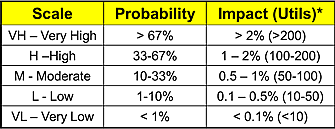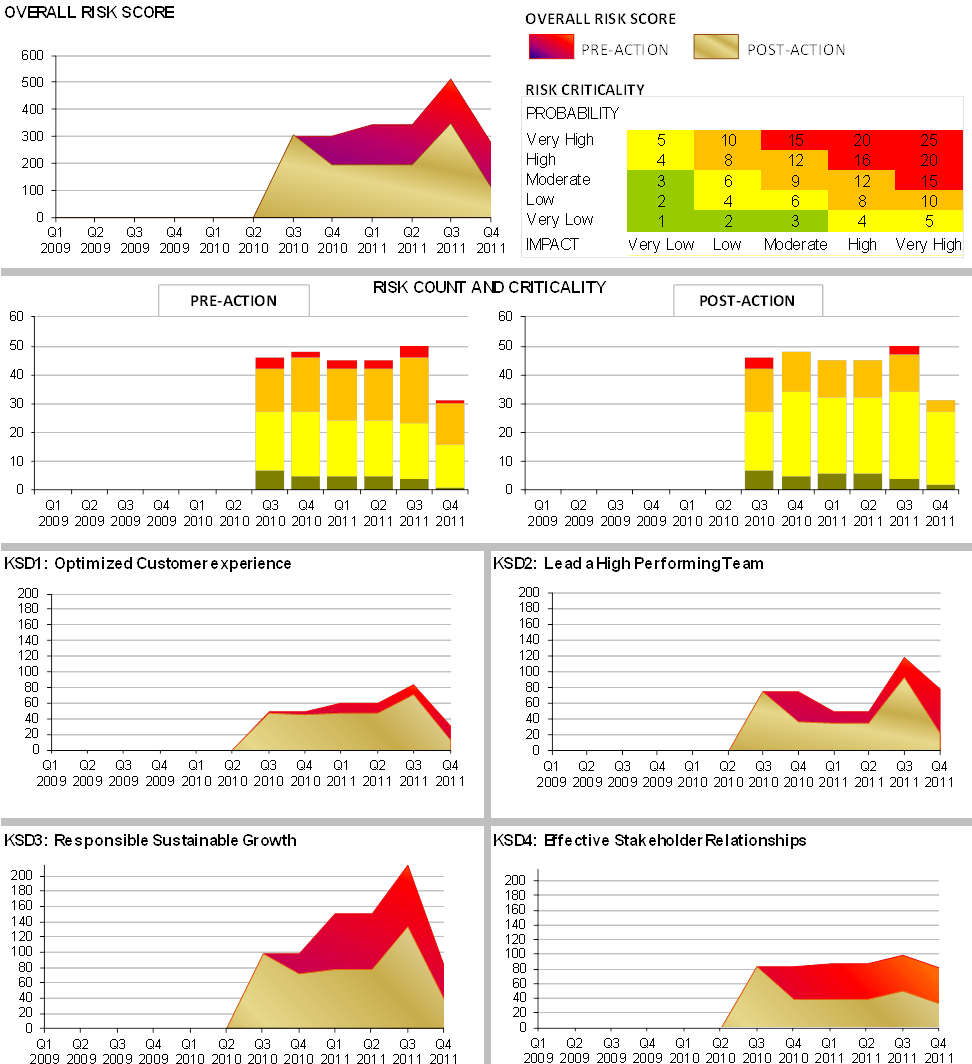
At first glance, the Fort McMurray Airport in Fort McMurray, Alberta, Canada would appear ordinary; it is a small airport authority, comprising a single runway, small terminal and serving a rural region removed from major metropolitan centers. However, this airport is the gateway to Canada’s oilsands and faces a number of unique challenges related to servicing one of the largest industrial construction projects in the world today. The unique challenges of the Fort McMurray airport include: unprecedented passenger growth, staffing constraints, infrastructure constraints, pressures from various stakeholder groups, the introduction of daily international flights, shifts in politics and even risks posed by the potential development of oil reserves beneath the airport site. Thus, the Fort McMurray Airport Authority (FMAA) turned to Revay and Associates Ltd. to assess the potential risks they face as an organization as they try to keep pace with the growth of the region, and Revay turned to @RISK to help with this analysis.
FMA is Unique
Dr. Mark Krahn, consultant at Revay and Associates, knew that the Fort McMurray Airport (FMA) was an unusual case when the Revay risk team tackled it. “It’s a small town airport in a city that has doubled in population in the past decade.” This jump in population is thanks to the Athabasca Oilsands, the second-largest oil deposit in the world after Saudi Arabia. These oilsands represent recoverable reserves of 170 billion barrels and estimated total reserves of 1.8 trillion barrels of this essential energy source. Most major oil companies, along with the accompanying industries and contractors, have rushed to take advantage of this opportunity. As a result, Fort McMurray has become a boomtown with skyrocketing house prices, low unemployment rates, accommodation shortages and high salaries.
The oil boom has accelerated air traffic into the area through increased “fly-in-fly-out” traffic of camp-based workers as well as the increasing local traffic. As a result, the FMA is the fastest growing airport in Canada. In 2012, the FMA had a record passenger throughput of approximately 1 million passengers. With an annual capacity of only 250,000 passengers in the existing terminal, the FMA desperately needed to expand. Plans for a new terminal, with a capacity of 1.5M passengers began in 2010. The new $250M terminal is currently wrapping up construction and is set to open in Spring 2014.
Due to the unique context of the FMA and its future direction, a number of risk factors needed to be considered around the expansion project, as well as around the success of the organization as a whole.
Revay and Associates Approach: Enterprise Risk vs. Project Risk Management
Revay and Associates Ltd. is a consulting firm that specializes in risk management, contract strategy, conflict management and overall project management. Initially Revay was engaged to lead the project risk assessment for the FMA expansion project.
The project risk assessment was focused specifically on the capital cost and schedule uncertainty of the new terminal construction project. Subsequently, Revay was asked to lead the enterprise risk management (ERM) assessment of the FMA. According to Krahn, formal ERM is a relatively new management discipline that has evolved over the past few years and includes methods and processes used by organizations to manage risks and seize opportunities related to the achievement of their objectives and corporate strategy. “ERM is much broader than project risk,” says Krahn. “Clients must first identify what the strategy of the organization is, what their mission is, and what their key success drivers (KSDs) and objectives are. In order to assess the risk, it is imperative that the organization be clear on what these KSDs and objectives are, and then we can determine the risks impacting their success.”
The identified enterprise risks and opportunities are often categorized according to a number of key areas, including:
*Operational risk *Reputational risk *Strategic risk *Personnel Safety and Health risk *Financial risk *Environmental / Containment risk *Productivity / Morale risk
“One of the biggest challenges of ERM is the many different categories or ‘buckets of risk’, says Krahn. “Senior Management needs to understand what the top overall risks are in order to implement effective mitigation actions and to understand the overall risk exposure. This poses an apples-to-oranges conundrum, as there may be several high-level risks in various categories making it difficult to draw comparisons between risks. Being able to compare risks across the different categories is critical to understanding what the organization’s top risks truly are and to focus the organization in mitigating the risk.”
To address this dilemma, Revay’s approach to the ERM assessment at FMAA had two novel aspects:
1. Martin Gough, Revay’s Risk Practice Lead, developed a methodology to allow for direct comparison between risks of different categories. Although risks could still be classified in various categories, a common impact currency, termed “Utils” or Utility, was used in the risk evaluation to allow for direct comparison between risks. 2. Rather than the more limited descriptive or qualitative nature of ERM, Revay applied quantitative techniques using @RISK to decipher more informative probabilistic risk details.
Dan Daitchman
Director at B. Riley Advisory Services
Revay’s use of @RISK for ERM Assessment for FMA
The FMAA has a strong leadership team and had developed a comprehensive strategic plan prior to completing the ERM assessment, including; vision, mission, values, Key Success Drivers (KSDs) and 5-year rolling goals. A collateral document, the annual Corporate Business Plan, outlines one-year corporate objectives and performance indicators. FMAA has identified four key KSDs and each is assigned a weight (percentage) factor:
*Optimized Customer Experience (40%) *To Lead a High Performing Airport Team (25%) *To Achieve Environmentally Responsible, Sustainable and Profitable Growth (20%) *To Foster Effective Stakeholder Relationships (15%)
Each of the four KSD areas has a series of specific and related objectives, each objective with its own sub-weighting.
In order to assess the enterprise risk and opportunity around each of the KSDs and their specific objectives, Revay facilitated off-site workshops with attendance by all of the key stakeholder groups, including the FMAA board of directors, FMAA administration and operations personnel, local government, provincial government, airlines, funders, insurer, various FMAA consultants, and representation from the expansion project management team. “Having good representation from all key stakeholder groups is critical to the success of the ERM assessment,” Krahn explains.
As part of the workshop, Revay presented and developed the risk scoring matrix with the attendees. By doing so, the workshop attendees had direct input into the matrix and learned how it was to be applied in the risk evaluation to ensure consistency of process. As this was a non-standard application methodology, this approach proved to be invaluable.

There are two variables that are to be evaluated for each risk and opportunity: probability and impact. However, in this application of ERM the impact is on a single scale as measured by Utils, rather than the various risk category impact descriptors as is common in traditional ERM. Each KSD area was provided with an initial credit of 10,000 Utils. In the workshop the teams then protected this balance through risk assessment, reduction and mitigation and improved the balance through opportunity identification and capitalization planning. The percent or Util impact evaluation is the direct reduction to the percent weighting of the individual Corporate Objectives and KSDs. Those risks with a higher detrimental impact to the objectives will be scored with a higher impact than those with a lower detrimental impact.
@RISK was used to model the uncertainty in both the probability scale and impact scale as determined by the scoring of each risk / opportunity. Instead of a single probability x impact result for each identified risk, @RISK allowed for the probabilistic range of outcomes to be determined for each identified risk (S-curve). Revay applied the “trigen” distribution (modified triangular) to model the range of both probability and impact for each risk. This quantitative information is much more informative for comparing risks, comparing KSDs, comparing categories of risk and assessing the overall ERM risk register.
@RISK Provides New Insights
There are two key results that come from this unique approach to ERM. First, using quantitative Monte Carlo assessment allows for probabilistic risk results. This information is important as it ties the uncertainty to the probability / confidence level. In addition to the mean (or P50) result, the entire range of results is known with the associated probability values (i.e. 90% or 10% confidence level etc.). Second, assessing the risk on a single Util scale allows for direct comparison between risks and between KSDs. This is critical as it allows management to focus on risk mitigation and response actions for those risks that are the highest rated overall.
1. There are two figures that are typical outputs of this type of assessment: Probabilistic S-curve showing the risk profile (pre- vs. post-mitigation action) vs. probability value (percent confidence). This comparison shows the benefit of risk mitigation.

2. Risk dashboard created by Revay to track and communicate the change in risk profile at quarterly intervals. This high-level view quickly allows an understanding of the risk trends, areas of highest concern and impact of mitigation.

In conclusion, the key benefits of this ERM methodology used to assess the risk around FMAA’s corporate strategy are (a) the confidence and understanding around the top individual risks impacting the organization, (b) an awareness of the top objectives and KSDs that are at highest risk, (c) an understanding of the risk trends over time, with and without mitigation, and in a probabilistic manner, and (d) a dynamic process that can be easily adjusted as an organization changes course in tune with the external environment in which it exists. Only through the use of @RISK and applying novel quantitative techniques was this achievable.
